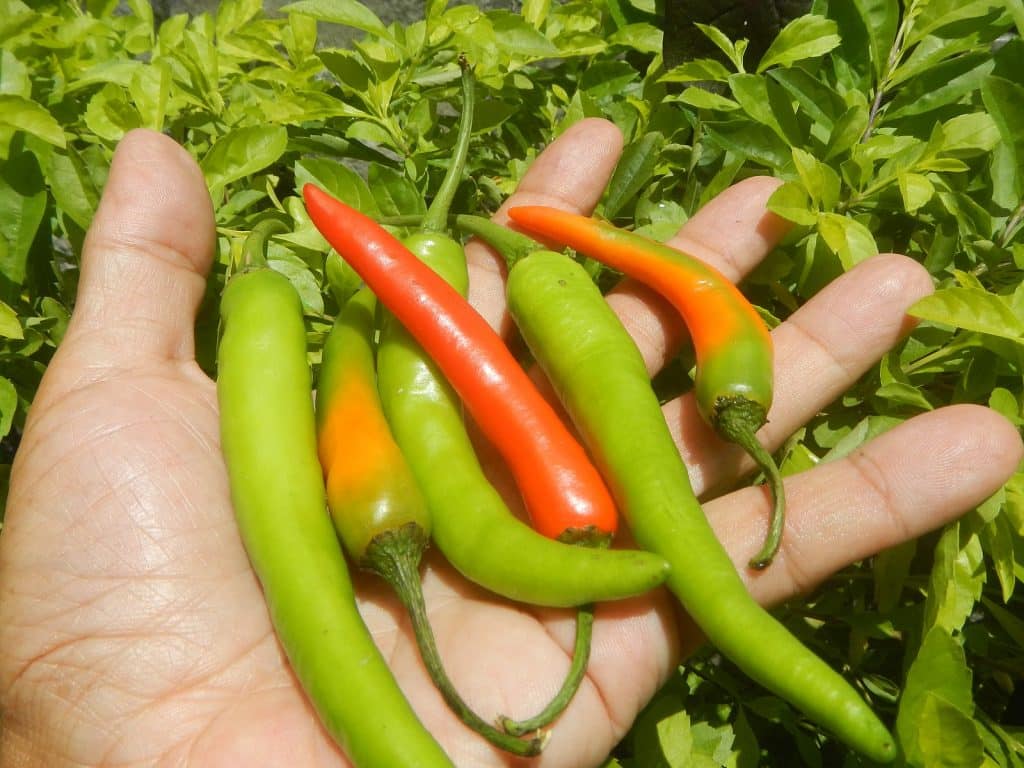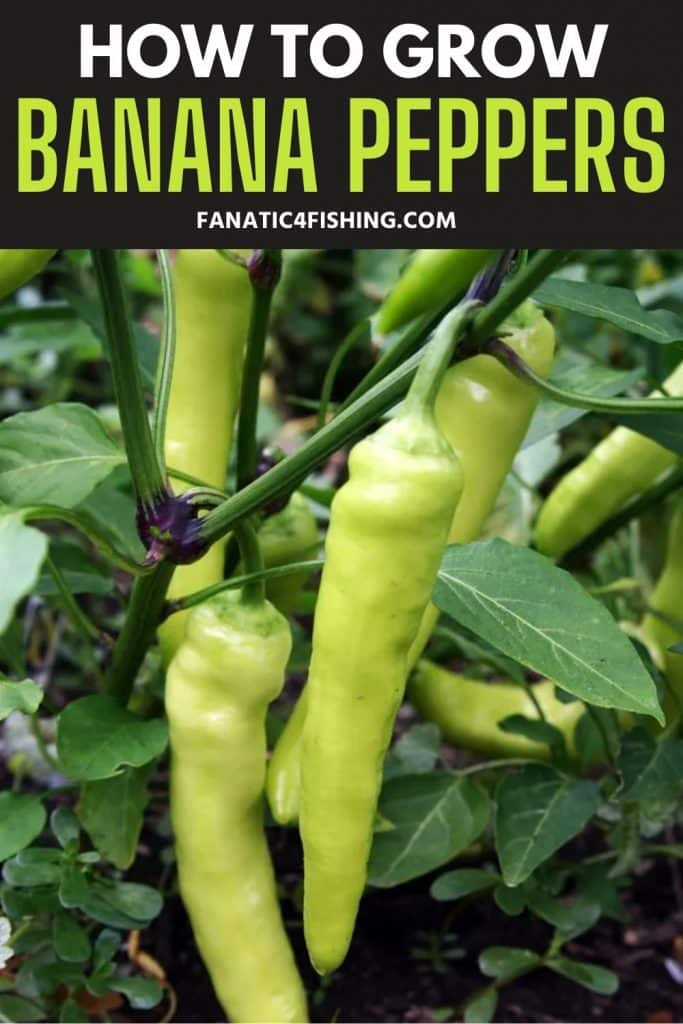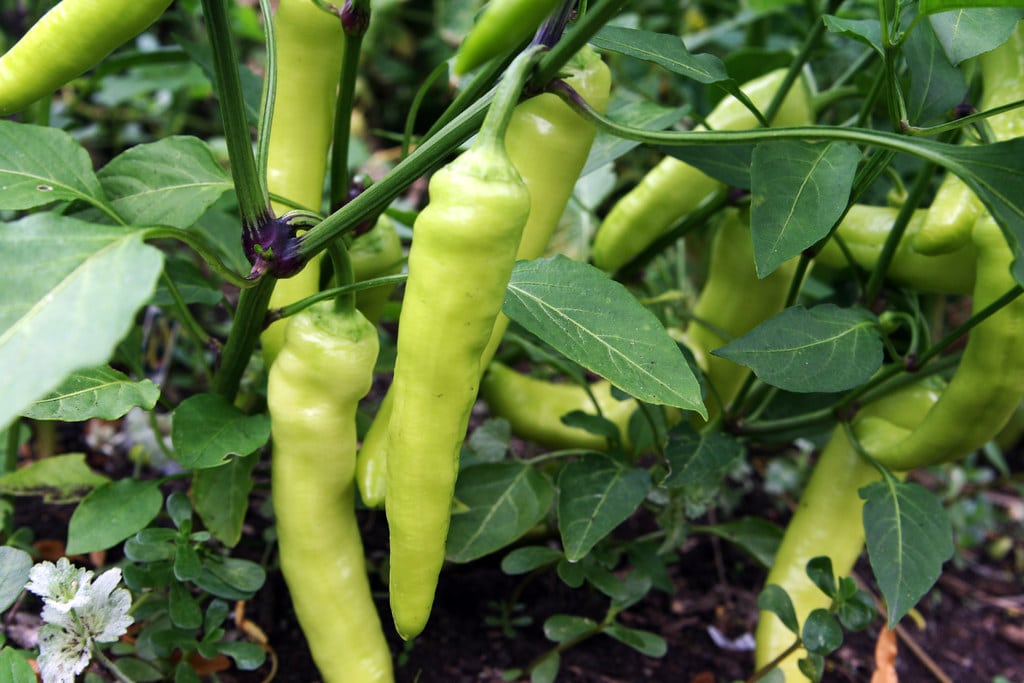As the name indicates, banana peppers belong to the pepper family. These peppers are slender and yellow in color. Banana peppers have been named so due to their stark similarity with the banana fruit. They are also given other names such as banana chili and yellow wax peppers (because of their waxy skin). These peppers can also turn into red or green color like other peppers from the family. Contrary to what their name might suggest, banana peppers do not taste like bananas! Their flavor is popular because they are not as spicy as other pepper varieties. So read on to learn how to grow banana peppers in your garden.
Uses of Banana Peppers
Banana peppers are high in fiber even though their calorie count is low. They are also rich in vitamins and minerals. This makes them a good addition to your diet if you want to control blood pressure or obesity. Because of their high fiber content, these peppers can also improve the digestive system. All these benefits of banana peppers are only possible if you add them to your meal plan. Banana peppers can be added to salads or can be used as toppings on a pizza. They also add an amazing flavor to sandwiches and burritos.
Growing Banana Peppers in Your Garden
While you can find banana peppers in the supermarket, they are extremely easy to grow in your own garden. A lot of people prefer to grow their own peppers instead of buying from a market as fresh banana peppers taste better. Here is a small guide on how you can grow banana peppers by yourself!
Getting Ready!
Once you have decided to plant banana peppers, you must prepare for the journey ahead. You should be aware of all the things you will need for planting and taking care of your peppers. First of all, you will need to buy pepper seeds as there will be no banana peppers without them. Other than that, some more essentials you will need are:
- Fertilizers
- Peat pot or seed starting tray
- Potting soil
- Grow light
Choosing the Banana Pepper Seeds

Many people skip this step and do not consider it important enough. In reality, the seeds you choose for planting play a vital role in your entire experience of growing a plant. When it comes to banana peppers, there are different varieties that you need to consider before you choose the seeds.
- Hot Hungarian wax is one of the best chilies you can grow in the British climate. This pepper has a citrus flavor to it and is a little bit spicy.
- Sweet banana peppers are suitable for those who do not prefer spicy flavors. This variety is also great when it comes to resisting diseases.
- Hot banana peppers are known for their crunchy and thick fruit. They are a great choice for those living in colder regions as you will be able to harvest them early in the season.
Planting the Peppers
Banana peppers need heat, which is why they must either be planted in a warmer region or indoors in case the climate is not favorable. Here are some steps you should follow while you plant your pepper seeds:
- You can plant the seeds in a seed starting tray or a peat pot. However, before you plant the seeds, make sure that the soil is moist. Add some water to the soil and mix it. After that, plant the seeds in the soil and pack them down gently. Spray the soil and the seed again in the end. Banana pepper seeds should be planted a month or two before being transplanted.
- Sturdy Fabric Material: Made of 300g of thickened nonwoven fabric, these pots are moderately permeable, and BPA-free
- Great Drainage: Nonwoven fabric means the pots do not retain excess water, allowing your roots to breathe for healthier, more vigorous growth
- Durable, Reinforced Handles: While the competition uses flimsy handles that are merely strips of the same fabric the pot is made from, we use serger stitches to sew handles onto the pot so they can support a full bag of soil
Prices pulled from the Amazon Product Advertising API on:
Product prices and availability are accurate as of the date/time indicated and are subject to change. Any price and availability information displayed on [relevant Amazon Site(s), as applicable] at the time of purchase will apply to the purchase of this product.
- Keep the seedlings in a warm place as they will need at least eight hours of sunlight daily. Keep spraying the soil with water so the seeds can get moisture. If you want to quicken the process, you can also use a seedling heat mat. Fix the thermostat to a temperature between 80 and 85 degrees F.
- Reliable Results: The VIVOSUN professional heat mat maintains sweet-spot temperatures around 68-86℉(20-30℃).
- Stable & Uniform Heat: The advanced far-infrared heating technology of this heat pad provides your plant with a warm environment.
- Built to Last: Designed with soft, flexible, and ultra-lasting material, this warming mat goes beyond stringent MET standards.
Prices pulled from the Amazon Product Advertising API on:
Product prices and availability are accurate as of the date/time indicated and are subject to change. Any price and availability information displayed on [relevant Amazon Site(s), as applicable] at the time of purchase will apply to the purchase of this product.
- Never let the seeds become dry during this stage. Whenever you see the top layer of soil getting dry, spray it with water. Another way to make sure that your seeds do not get dry is by installing a humidity dome.
- In normal conditions, a seed will sprout within 6 to 7 days. After that, your seedling will require more light than ever.
- Equipped with 10 Red + 74 White LEDs.
- The indoor seedling light offer the circular memory timer function with 3 options-4h/8h/12h.
- Easy to Install with flexible Gooseneck & strong clamp.
Prices pulled from the Amazon Product Advertising API on:
Product prices and availability are accurate as of the date/time indicated and are subject to change. Any price and availability information displayed on [relevant Amazon Site(s), as applicable] at the time of purchase will apply to the purchase of this product.
- Once the seedlings are grown enough, you can transplant them. While transplanting the seedlings, choose a spot that will get plenty of sunlight. Plant the seedlings at least seven to eight inches apart.
- Help improve root efficiency and encourage nutrient uptake.
- Designed for container planting.
- Highly recommended for container gardens. Ready to use right out of the bag and is pH adjusted to allow for maximum nutrient upta
Prices pulled from the Amazon Product Advertising API on:
Product prices and availability are accurate as of the date/time indicated and are subject to change. Any price and availability information displayed on [relevant Amazon Site(s), as applicable] at the time of purchase will apply to the purchase of this product.
Caring for the Banana Peppers
Once you have planted the banana peppers, it is important to care for them so they stay healthy. Protect your plant before it can be attacked and take the necessary measures. Damp leaves can be attacked by a fungus which is why avoid overhead watering. Hand watering at the plant base can keep the leaves from staying damp. Other than fungus, Thrips, aphids, flea beetles, cutworms, and whiteflies pose a threat to banana peppers. In case your peppers get attacked by pests, pluck them off or wash the plant leaves with the special horticultural soap. Blossom end rot is another disease that can kill your banana peppers. In order to protect the plant, you should keep the soil consistently moist. Adding mulch to the soil will help retain the moisture.
- Miracle-Gro Performance Organics All Purpose Plant Nutrition feeds plants instantly
- Apply easily with the Miracle-Gro Performance Organics Garden Feeder or your watering can
- Enhanced with micronutrients to deliver high performance results
Prices pulled from the Amazon Product Advertising API on:
Product prices and availability are accurate as of the date/time indicated and are subject to change. Any price and availability information displayed on [relevant Amazon Site(s), as applicable] at the time of purchase will apply to the purchase of this product.
Harvesting the Banana Peppers

You will know it is time to harvest the peppers when they turn yellow, green, or red. Harvesting the banana pepper also depends on the variety you choose. Some banana peppers are harvested in July or August, while some become fully grown by September.
Most people are usually not aware of it, but choosing the heat level for your banana peppers can also affect their taste. For example, if you harvest the peppers early you will get a pungent taste. On the other hand, doing it later will give the peppers a mellow and sweet taste. After harvesting, you can store the peppers in your refrigerator for about a week. If you want the peppers to last longer, you can store chopped peppers in the freezer where they can be used for a whole year.
How to Grow Banana Peppers – Final Word
Not all grocery stores will have fresh banana peppers, which is a great motivation for anyone to start growing these in their home garden. Banana peppers are fairly easy to grow as all they need is plenty of water and sunlight. When you plant a seed, it will need more than just light and water. As the seed is still growing and germinating, it will need minerals and nutrients that can help its growth. If you are thinking of planting banana peppers, there are some products that can help. With some pest prevention and care, you will be able to grow delicious and healthy banana peppers in your own home!












